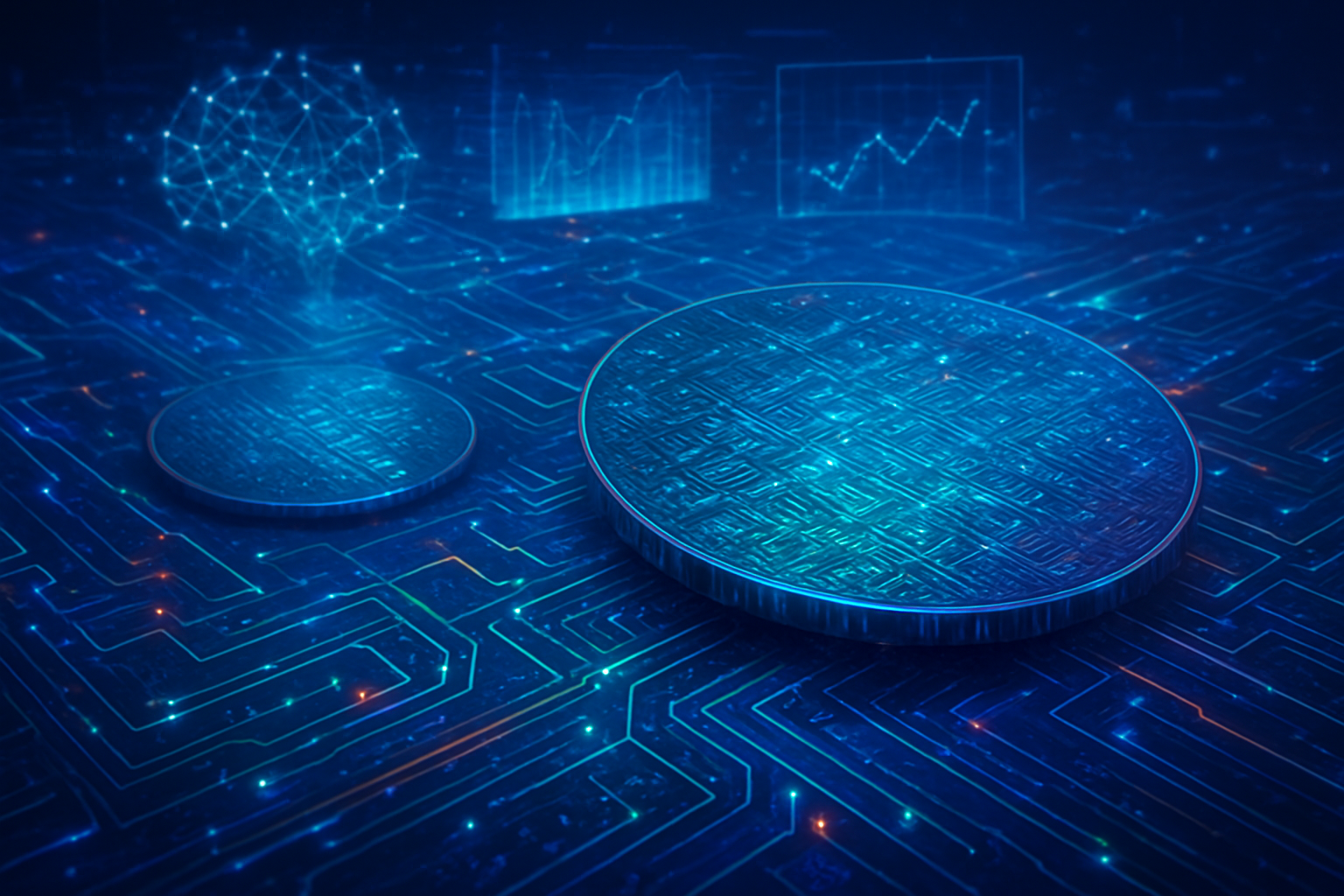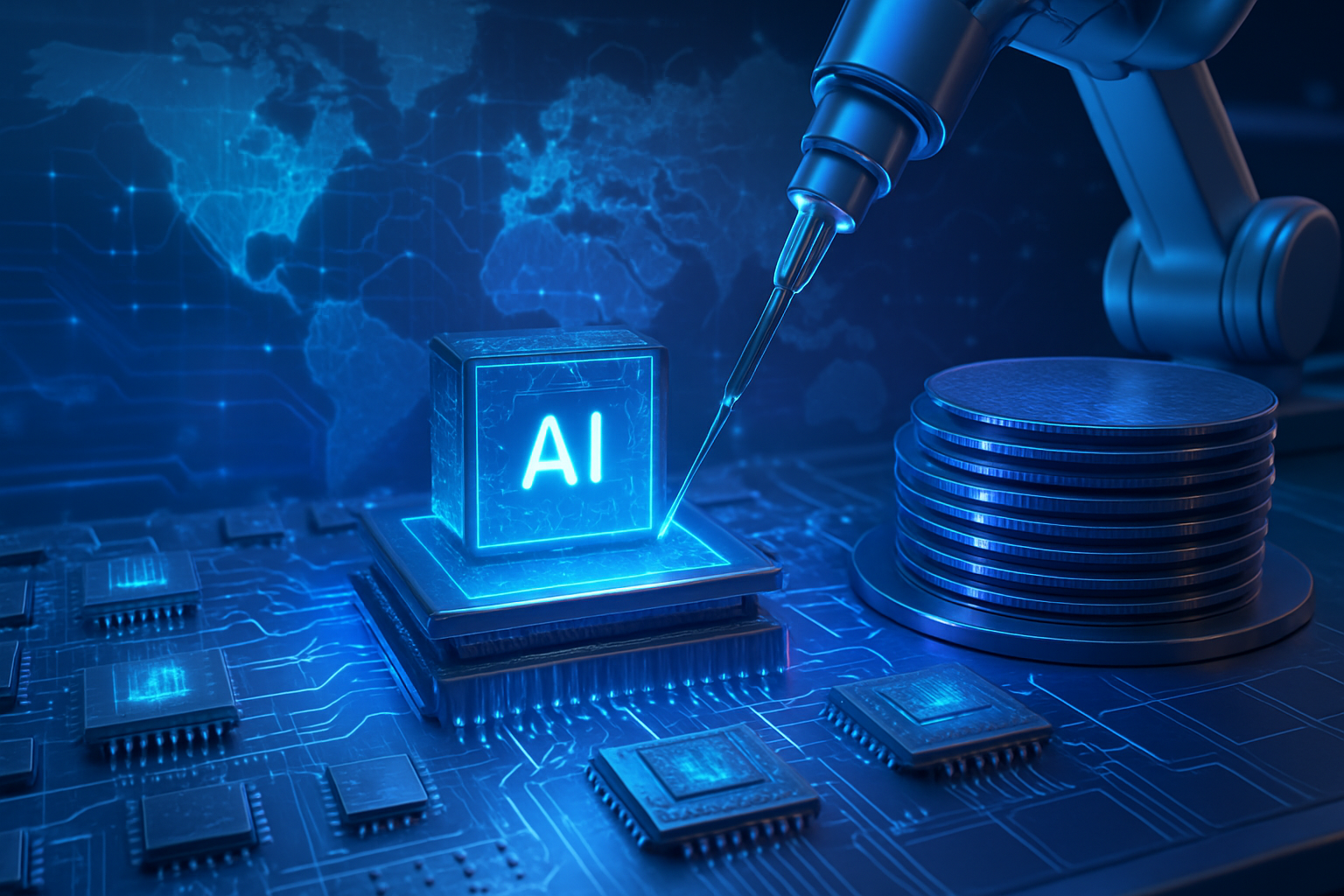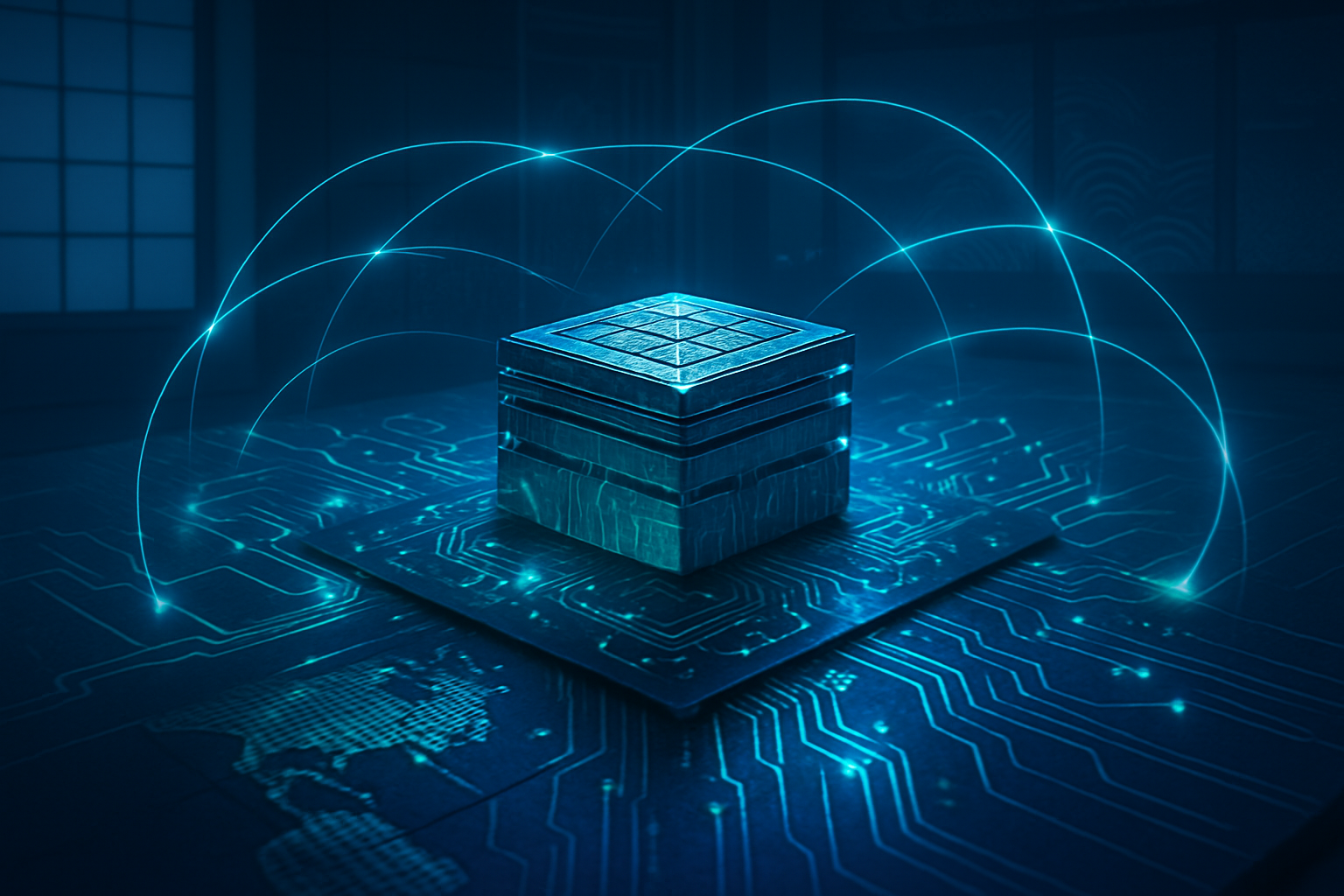Taiwan Semiconductor Manufacturing Company (TSMC) (NYSE: TSM), the undisputed titan of the global semiconductor foundry industry, has been at the epicenter of the artificial intelligence (AI) revolution. As the primary manufacturer for the advanced chips powering everything from generative AI models to autonomous vehicles, one might expect an uninterrupted surge in its financial performance. Indeed, the period from late 2024 into late 2025 has largely been characterized by robust growth, with TSMC repeatedly raising its annual revenue forecasts for 2025. However, a closer look reveals instances of moderated growth rates and specific sequential dips in revenue, creating a nuanced picture that demands investigation. This apparent paradox – a slowdown in certain growth metrics despite insatiable demand for AI chips – highlights the complex interplay of market dynamics, production realities, and macroeconomic headwinds facing even the most critical players in the tech ecosystem.
This article delves into the multifaceted reasons behind these periodic decelerations in TSMC's otherwise impressive growth trajectory, examining how external factors, internal constraints, and the sheer scale of its operations contribute to a more intricate narrative than a simple boom-and-bust cycle. Understanding these dynamics is crucial for anyone keen on the future of AI and the foundational technology that underpins it.
Unpacking the Nuances: Beyond the Headline Growth Figures
While TSMC's overall financial performance through 2025 has been remarkably strong, with record-breaking profits and revenue in Q3 2025 and an upward revision of its full-year revenue growth forecast to the mid-30% range, specific data points have hinted at a more complex reality. For instance, the first quarter of 2025 saw a 5.1% year-over-year decrease in revenue, primarily attributed to typical smartphone seasonality and disruptions caused by an earthquake in Taiwan. More recently, the projected revenue for Q4 2025 indicated a slight sequential decrease from the preceding record-setting quarter, a rare occurrence for what is historically a peak period. Furthermore, monthly revenue data for October 2025 showed a moderation in year-over-year growth to 16.9%, the slowest pace since February 2024. These instances, rather than signaling a collapse in demand, point to a confluence of factors that can temper even the most powerful growth engines.
A primary technical bottleneck contributing to this moderation, despite robust demand, is the constraint in advanced packaging capacity, specifically CoWoS (Chip-on-Wafer-on-Substrate). AI chips, particularly those from industry leaders like Nvidia (NASDAQ: NVDA) and Advanced Micro Devices (NASDAQ: AMD), rely heavily on this sophisticated packaging technology to integrate multiple dies, including high-bandwidth memory (HBM), into a single package, enabling the massive parallel processing required for AI workloads. TSMC's CEO, C.C. Wei, openly acknowledged that production capacity remains tight, and the company is aggressively expanding its CoWoS output, aiming to quadruple it by the end of 2025 and reach 130,000 wafers per month by 2026. This capacity crunch means that even with orders flooding in, the physical ability to produce and package these advanced chips at the desired volume can act as a temporary governor on revenue growth.
Beyond packaging, other factors contribute to the nuanced growth picture. The sheer scale of TSMC's operations means that achieving equally high percentage growth rates becomes inherently more challenging as its revenue base expands. A 30% growth on a multi-billion-dollar quarterly revenue base represents an astronomical increase in absolute terms, but the percentage itself might appear to moderate compared to earlier, smaller bases. Moreover, ongoing macroeconomic uncertainty leads to more conservative guidance from management, as seen in their Q4 2025 outlook. Geopolitical risks, particularly U.S.-China trade tensions and export restrictions, also introduce an element of volatility, potentially impacting demand from certain segments or necessitating costly adjustments to global supply chains. The ramp-up costs for new overseas fabs, such as those in Arizona, are also expected to dilute gross margins by 1-2%, further influencing the financial picture. Initial reactions from the AI research community and industry experts generally acknowledge these complexities, recognizing that while the long-term AI trend is undeniable, short-term fluctuations are inevitable due to manufacturing realities and broader economic forces.
Ripples Across the AI Ecosystem: Impact on Tech Giants and Startups
TSMC's position as the world's most advanced semiconductor foundry means that any fluctuations in its production capacity or growth trajectory send ripples throughout the entire AI ecosystem. Companies like Nvidia (NASDAQ: NVDA), AMD (NASDAQ: AMD), Apple (NASDAQ: AAPL), and Qualcomm (NASDAQ: QCOM), which are at the forefront of AI hardware innovation, are deeply reliant on TSMC's manufacturing prowess. For these tech giants, a constrained CoWoS capacity, for example, directly translates into a limited supply of their most advanced AI accelerators and processors. While they are TSMC's top-tier customers and likely receive priority, even they face lead times and allocation challenges, potentially impacting their ability to fully capitalize on the explosive AI demand. This can affect their quarterly earnings, market share, and the speed at which they can bring next-generation AI products to market.
The competitive implications are significant. For instance, companies like Intel (NASDAQ: INTC) with its nascent foundry services (IFS) and Samsung (KRX: 005930) Foundry, which are striving to catch up in advanced process nodes and packaging, might see a window of opportunity, however slight, if TSMC's bottlenecks persist. While TSMC's lead remains substantial, any perceived vulnerability could encourage customers to diversify their supply chains, fostering a more competitive foundry landscape in the long run. Startups in the AI hardware space, often with less purchasing power and smaller volumes, could face even greater challenges in securing wafer allocation, potentially slowing their time to market and hindering their ability to innovate and scale.
Moreover, the situation underscores the strategic importance of vertical integration or close partnerships. Hyperscalers like Google (NASDAQ: GOOGL), Amazon (NASDAQ: AMZN), and Microsoft (NASDAQ: MSFT), which are designing their own custom AI chips (TPUs, Inferentia, Maia AI Accelerator), are also highly dependent on TSMC for manufacturing. Any delay or capacity constraint at TSMC can directly impact their data center buildouts and their ability to deploy AI services at scale, potentially disrupting existing products or services that rely on these custom silicon solutions. The market positioning and strategic advantages of AI companies are thus inextricably linked to the operational efficiency and capacity of their foundry partners. Companies with strong, long-term agreements and diversified sourcing strategies are better positioned to navigate these supply-side challenges.
Broader Significance: AI's Foundational Bottleneck
The dynamics observed at TSMC are not merely an isolated corporate challenge; they represent a critical bottleneck in the broader AI landscape. The insatiable demand for AI compute, driven by the proliferation of large language models, generative AI, and advanced analytics, has pushed the semiconductor industry to its limits. TSMC's situation highlights that while innovation in AI algorithms and software is accelerating at an unprecedented pace, the physical infrastructure—the advanced chips and the capacity to produce them—remains a foundational constraint. This fits into broader trends where the physical world struggles to keep up with the demands of the digital.
The impacts are wide-ranging. From a societal perspective, a slowdown in the production of AI chips, even if temporary or relative, could potentially slow down the deployment of AI-powered solutions in critical sectors like healthcare, climate modeling, and scientific research. Economically, it can lead to increased costs for AI hardware, impacting the profitability of companies deploying AI and potentially raising the barrier to entry for smaller players. Geopolitical concerns are also amplified; Taiwan's pivotal role in advanced chip manufacturing means that any disruptions, whether from natural disasters or geopolitical tensions, have global ramifications, underscoring the need for resilient and diversified supply chains.
Comparisons to previous AI milestones reveal a consistent pattern: advancements in algorithms and software often outpace the underlying hardware capabilities. In the early days of deep learning, GPU availability was a significant factor. Today, it's the most advanced process nodes and, critically, advanced packaging techniques like CoWoS that define the cutting edge. This situation underscores that while software can be iterated rapidly, the physical fabrication of semiconductors involves multi-year investment cycles, complex supply chains, and highly specialized expertise. The current scenario serves as a stark reminder that the future of AI is not solely dependent on brilliant algorithms but also on the robust and scalable manufacturing infrastructure that brings them to life.
The Road Ahead: Navigating Capacity and Demand
Looking ahead, TSMC is acutely aware of the challenges and is implementing aggressive strategies to address them. The company's significant capital expenditure plans, earmarking billions for capacity expansion, particularly in advanced nodes (3nm, 2nm, and beyond) and CoWoS packaging, signal a strong commitment to meeting future AI demand. Experts predict that TSMC's investments will eventually alleviate the current packaging bottlenecks, but it will take time, likely extending into 2026 before supply can fully catch up with demand. The focus on 2nm technology, with fabs actively being expanded, indicates their commitment to staying at the forefront of process innovation, which will be crucial for the next generation of AI accelerators.
Potential applications and use cases on the horizon are vast, ranging from even more sophisticated generative AI models requiring unprecedented compute power to pervasive AI integration in edge devices, industrial automation, and personalized healthcare. These applications will continue to drive demand for smaller, more efficient, and more powerful chips. However, challenges remain. Beyond simply expanding capacity, TSMC must also navigate increasing geopolitical pressures, rising manufacturing costs, and the need for a skilled workforce in multiple global locations. The successful ramp-up of overseas fabs, while strategically important for diversification, adds complexity and cost.
What experts predict will happen next is a continued period of intense investment in semiconductor manufacturing, with a focus on advanced packaging becoming as critical as process node leadership. The industry will likely see continued efforts by major AI players to secure long-term capacity commitments and potentially even invest directly in foundry capabilities or co-develop manufacturing processes. The race for AI dominance will increasingly become a race for silicon, making TSMC's operational health and strategic decisions paramount. The near-term will likely see continued tight supply for the most advanced AI chips, while the long-term outlook remains bullish for TSMC, given its indispensable role.
A Critical Juncture for AI's Foundational Partner
In summary, while Taiwan Semiconductor Manufacturing Company (NYSE: TSM) has demonstrated remarkable growth from late 2024 to late 2025, overwhelmingly fueled by the unprecedented demand for AI chips, the narrative of a "slowdown" is more accurately understood as a moderation in growth rates and specific sequential dips. These instances are primarily attributable to factors such as seasonal demand fluctuations, one-off events like earthquakes, broader macroeconomic uncertainties, and crucially, the current bottlenecks in advanced packaging capacity, particularly CoWoS. TSMC's indispensable role in manufacturing the most advanced AI silicon means these dynamics have profound implications for tech giants, AI startups, and the overall pace of AI development globally.
This development's significance in AI history lies in its illumination of the physical constraints underlying the digital revolution. While AI software and algorithms continue to evolve at breakneck speed, the production of the advanced hardware required to run them remains a complex, capital-intensive, and time-consuming endeavor. The current situation underscores that the "AI race" is not just about who builds the best models, but also about who can reliably and efficiently produce the foundational chips.
As we look to the coming weeks and months, all eyes will be on TSMC's progress in expanding its CoWoS capacity and its ability to manage macroeconomic headwinds. The company's future earnings reports and guidance will be critical indicators of both its own health and the broader health of the AI hardware market. The long-term impact of these developments will likely shape the competitive landscape of the semiconductor industry, potentially encouraging greater diversification of supply chains and continued massive investments in advanced manufacturing globally. The story of TSMC in late 2025 is a testament to the surging power of AI, but also a sober reminder of the intricate and challenging realities of bringing that power to life.
This content is intended for informational purposes only and represents analysis of current AI developments.
TokenRing AI delivers enterprise-grade solutions for multi-agent AI workflow orchestration, AI-powered development tools, and seamless remote collaboration platforms.
For more information, visit https://www.tokenring.ai/.



